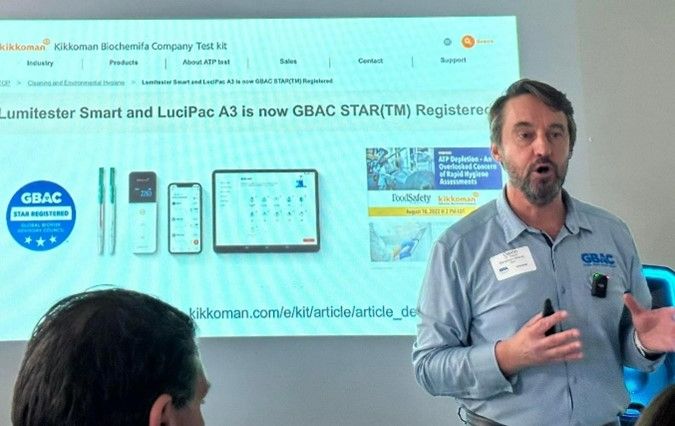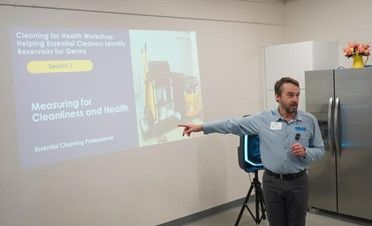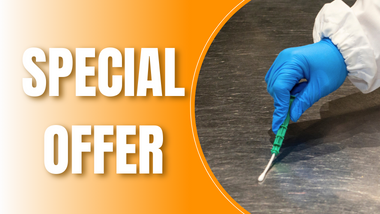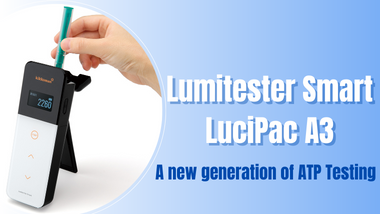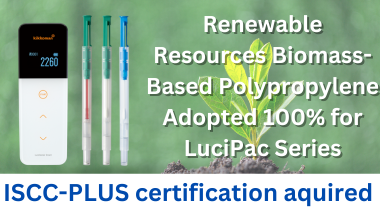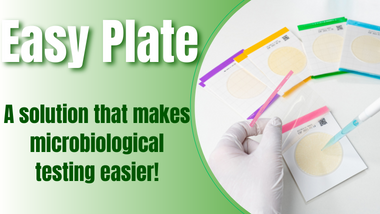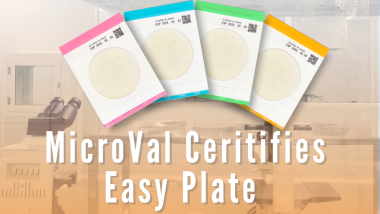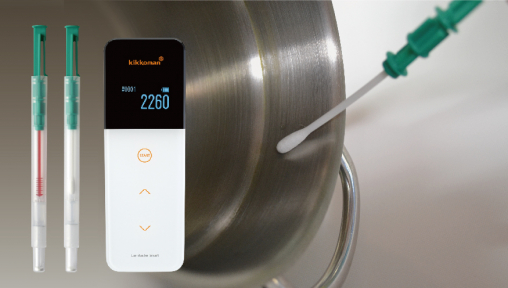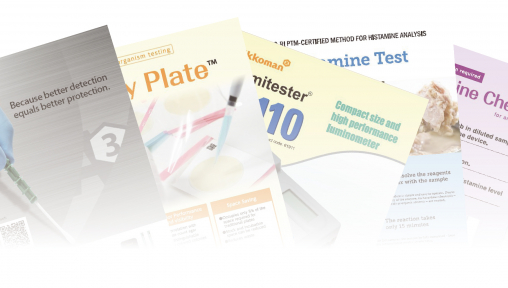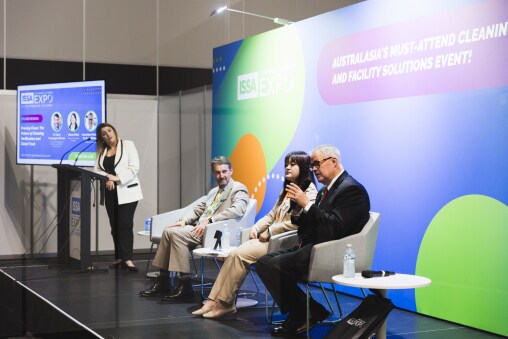Elevating Cleanliness Standards: Insights from the ISSA Residential Cleaning for Health Workshop

The ISSA Residential Cleaning for Health Workshop recently hosted an informative session focused on the science of cleanliness measurement using ATP meters. The workshop aimed to educate cleaning professionals on advanced methods to ensure high standards of cleanliness, emphasizing the importance of objective, quantifiable data in maintaining healthy indoor environments.
Understanding ATP Testing
An ATP test is used to measure levels of ATP on a surface, and thus the cleanliness levels of a building. The ATP test provides accurate results that define, monitor, and maintain cleaning standards. Adenosine triphosphate (ATP), the energy molecule found in all living cells. By testing for the presence of ATP on a surface, you’re testing for the presence of microorganisms, like bacteria, and organic matter, including food residue, allergens, blood, human perspiration, saliva. The presence of ATP is detected using a bioluminescence reaction, providing a quantifiable measure of cleanliness in Relative Light Units (RLU). The presence of ATP on a surface indicates the presence of soil and contamination. ATP tests can be conducted before and after cleaning a surface to determine overall cleaning performance and measure cleanliness of the surface by providing quantitative and meaningful values.
The Kikkoman A3 ATP Meter
This workshop featured the ATP Test (Kikkoman A3), a leading tool in the industry for such assessments. Kikkoman A3 stands out as the only ATP test capable of detecting ATP (adenosine triphosphate), ADP (adenosine diphosphate), and AMP (adenosine monophosphate). This capability allows for a more comprehensive measurement of organic contamination, providing a more accurate and sensitive assessment of surface cleanliness. The Kikkoman A3's advanced detection technology ensures that even the smallest traces of organic matter are identified, making it an invaluable tool for maintaining high hygiene standards.
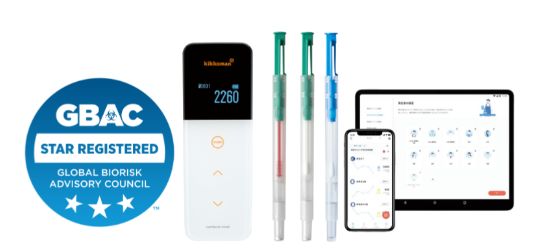
Expert Guidance by Dr. Gavin Macgregor-Skinner
Dr. Gavin Macgregor-Skinner, Senior Director at ISSA, led the session, bringing his extensive expertise in infection control and bio-risk management to the forefront. Dr. Macgregor-Skinner demonstrated the use of the Kikkoman A3, explaining why, how, and when to test and the interpretation of results to help improve the cleaning methods of ISSA Residential members and how to explain the results to their customers.
Practical Demonstrations
One of the highlights of the workshop was a live demonstration conducted by Dr. Gavin Macgregor-Skinner. Seven ISSA members volunteered to have their personal cell phones tested. All the cell phones had initial values over 3,000 RLU. But one cell had an initial ATP before cleaning reading that was alarmingly high at 19,042 RLU, indicating a substantial presence of biological contaminants.
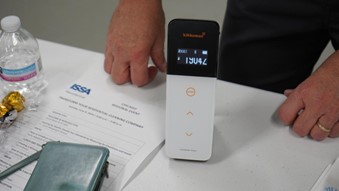
The Cleaning Process
Dr. Gavin Macgregor-Skinner then demonstrated the effectiveness of cleaning with a dry microfiber cloth. Specifically, a pink ISSA Cleaning for a Reason microfiber cloth was used. Cleaning for a Reason, and ISSA Charities program provides free cleaning of homes for cancer patients. This pink microfiber cloth symbolizes hope and is given to all Cleaning for a Reason residential cleaners, cleaning industry volunteers, and community volunteers. Since starting in 2006, Cleaning for a Reason volunteers have provided free home cleaning for 55,215 cancer patients and their families, and these services are valued at more than US$19 million. Microfiber cloth is specially designed for efficient cleaning, capable of trapping and removing dirt, and other particles from surfaces.
Results and Recommendations
After cleaning the cell phone with the microfiber cloth, a subsequent ATP test showed a dramatic reduction in the RLU count, bringing it down to 178 RLU, a 99% decrease. This significant decrease illustrated the efficacy of the microfiber cloth in removing contaminants. According to the manufacturer, a surface is considered effectively cleaned if the ATP meter reading is less than 500 RLU. The result of 178 RLU post-cleaning indicated that the cell phone surface had been cleaned to a high standard of hygiene.
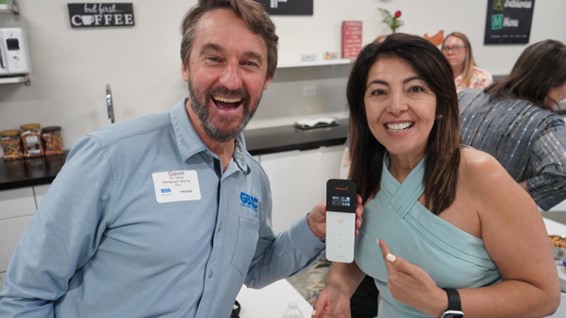
(Left) Dr. Gavin Macgregor-Skinner, Senior Director at ISSA, (Right) Sherly Perlinsky S&G Cleaning Services in New Jersey
Importance for Residential Cleaning
The ISSA Residential Cleaning for Health Workshop underscored the importance of using ATP meters for validating cleaning processes in residential settings. By incorporating these scientific methods, cleaning professionals can provide measurable proof of cleanliness, thereby enhancing customer trust and ensuring healthier living environments. The session by Dr. Gavin Macgregor-Skinner provided valuable insights into the practical application of ATP testing, demonstrating that even simple cleaning tools like microfiber cloths can achieve remarkable results when used correctly. The workshop not only educated attendees on the latest cleaning technologies but also reinforced the significance of maintaining rigorous cleanliness standards to promote health and well-being. In conclusion, the ISSA Residential Cleaning for Health Workshop successfully highlighted the critical role of ATP meters in modern cleaning practices, offering cleaning professionals the knowledge and tools needed to achieve and verify superior levels of cleanliness.



